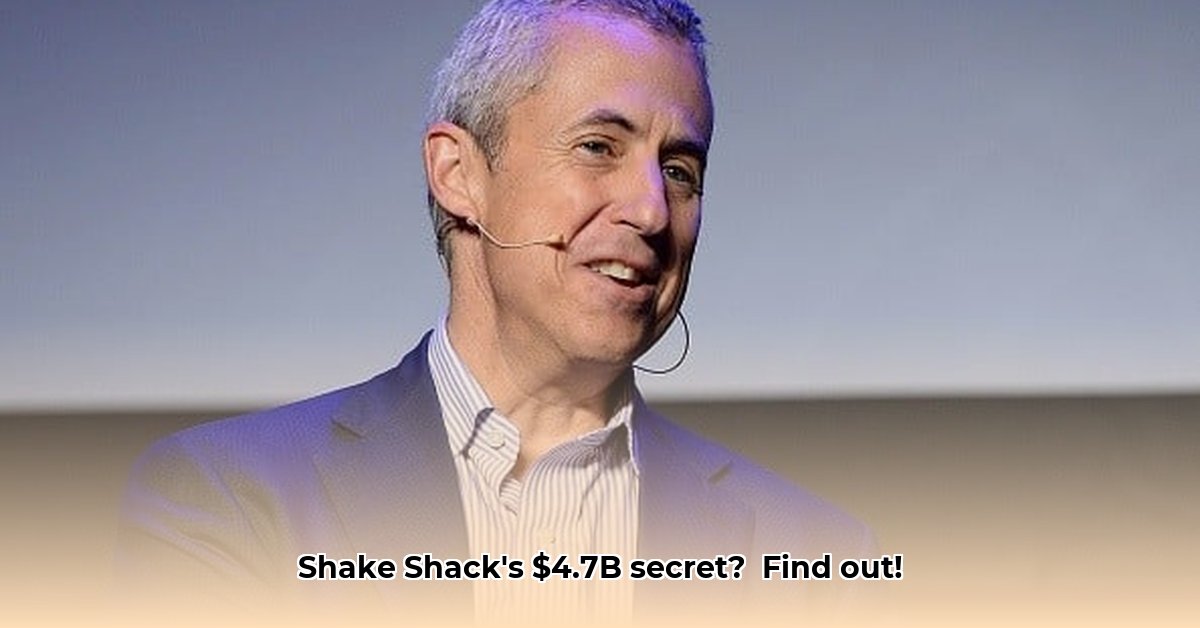
Shake Shack's remarkable journey from a single hot dog cart to a multi-billion dollar enterprise presents a compelling case study in brand building and strategic expansion. This analysis delves into the factors driving its current ~$4.7 billion market valuation and explores the potential risks and rewards for future growth.
Shake Shack's Market Value: A Decade of Delicious Growth
Since its initial public offering (IPO), Shake Shack's market capitalization has experienced substantial growth. This reflects not only the popularity of its premium burgers but also the company's strategic expansion and brand recognition. While the precise market value fluctuates daily, estimates consistently place it around $4.6 to $4.7 billion. How did Shake Shack achieve this remarkable trajectory?
Some analysts estimate an average annual growth rate exceeding 11% for Shake Shack. This sustained growth highlights a successful business model that resonates with consumers. However, isn't consistent growth guaranteed? To maintain this momentum, Shake Shack must adapt to evolving consumer preferences and navigate the intensely competitive fast-food landscape.
What Fuels Shake Shack's Success? More Than Just Tasty Burgers
Shake Shack's success isn't solely attributable to its delicious food. Several factors contribute to its market strength:
- Strong Brand Recognition: Shake Shack has cultivated a premium brand image, synonymous with high-quality burgers and a memorable dining experience. This brand loyalty is a significant asset.
- Strategic Expansion: A carefully planned expansion strategy, opening new locations at a calculated pace, has broadened its customer base and increased revenue streams.
- Adaptability: While expansion is key, Shake Shack's ability to adapt to evolving consumer trends—responding to changing tastes, health consciousness, and the demand for convenient delivery—is equally vital for long-term success.
However, maintaining this upward trajectory requires constant vigilance. The fast-food landscape is dynamic. What ensures continued performance?
Navigating the Competitive Fast-Food Market: A Burger Battle Royale
The fast-food industry is fiercely competitive. Shake Shack confronts challenges from established giants and emerging competitors. Its ability to maintain its market position hinges on several factors:
- Maintaining Product Excellence: Continuously delivering high-quality food and service is paramount.
- Cost Management: Effective cost control is essential to maintaining profitability, especially in an inflationary environment.
- Customer Responsiveness: Adapting to changing consumer demands and preferences, including health trends and convenience options, is critical for sustained growth.
Are these factors enough to ensure continued success for Shake Shack?
Challenges and Mitigation Strategies: Protecting the Bottom Line
Even with its current market dominance, Shake Shack faces significant challenges:
- Inflation and Rising Food Costs: Increased input costs squeeze profit margins.
- Economic Downturns: Recessions may cause consumers to reduce discretionary spending on dining out.
- Reputation Management: Negative publicity or public relations crises can severely damage brand image and customer trust.
To mitigate these risks, Shake Shack must:
- Optimize Supply Chain Management: Efficient sourcing to reduce costs.
- Strategic Pricing: Balancing price increases with consumer acceptance.
- Proactive PR: Maintaining a positive brand image and swiftly addressing any negative developments.
How well Shake Shack addresses these concerns will significantly impact its future valuation.
The Future of Shake Shack: A Continuing Story
Maintaining its upward trajectory necessitates continued innovation and strategic decision-making. Sustained growth will require:
- Careful Expansion: Strategically planned expansion, ensuring profitability in new locations rather than solely focusing on rapid growth.
- Financial Prudence: Maintaining healthy financial metrics and adapting to economic conditions.
- Competitive Differentiation: Maintaining its brand distinctiveness and offering unique value propositions to attract and retain customers.
Will Shake Shack's financial performance continue its upward trend?
Investing in Shake Shack: Risks and Rewards
Investing in Shake Shack presents a high-risk, high-reward scenario. Potential investors should:
- Conduct Thorough Due Diligence: Analyze financial statements, growth projections, and industry trends.
- Diversify Portfolios: Reduce risk by spreading investments across different assets.
- Monitor Key Performance Indicators (KPIs): Track crucial metrics such as average unit volume (AUV), operating margins, and same-store sales growth.
- Stay Informed of Market Trends: Economic conditions significantly impact the restaurant industry.
- Consider a Long-Term Investment: Shake Shack's growth strategy is a long-term undertaking.
- Develop an Exit Strategy: Establish a clear plan for selling investments based on personal financial goals.
This comprehensive analysis highlights the key factors driving Shake Shack's impressive growth and the challenges it faces. The company's future net worth remains a dynamic story, contingent on its ability to navigate the complexities of the fast-food industry and maintain its brand dominance.